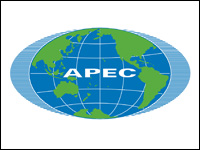APEC Climate Pact: A Compromise -- but forward looking?
 Vancouver, Canada (GLOBE-Net) – As far as it went, the Final Statement released on Sunday by leaders of the 21-member Asia Pacific Economic Cooperation at the end of their Sydney Australia summit, was compromise – but one that had some forward looking potential.
Vancouver, Canada (GLOBE-Net) – As far as it went, the Final Statement released on Sunday by leaders of the 21-member Asia Pacific Economic Cooperation at the end of their Sydney Australia summit, was compromise – but one that had some forward looking potential.
“The world needs to slow, stop and then reverse the growth of global greenhouse gas emissions,” the 21 leaders said in the forum’s declaration on climate change.
There is nothing profound in this restatement of the obvious, but because it was endorsed by all of the group’s rich and developing members, it could influence upcoming U.N. negotiations on climate change.
In a separate Declaration on Climate Change, Energy Security and Clean Development, the Leaders stated that economic growth, energy security and climate change are fundamentally interlinked challenges for the APEC region, and reaffirmed their commitment to the United Nations Framework Convention on Climate Change (UNFCCC).
Based on UNFCCC principles, a series of points were set out as the basis for any equitable and effective post-2012 international climate change arrangement:
Based on the foregoing elements of compromise, the APEC Leaders that are Parties to the UNFCCC agreed to work actively and constructively toward a comprehensive post-2012 arrangement at the upcoming Conference of the Parties.
In a separate Action Agenda the Leaders decided to:
While many have dismissed the statements as ineffective in terms of actually reducing greenhouse gas emissions, the APEC climate change declaration brings together the world’s major economies and some of its biggest polluters under one framework, which if adopted at upcoming climate change negotiations in Washington, New York and Indonesia to devise a successor to the Kyoto Protocol could have powerful global repercussions.
The only two concrete goals in the APEC declaration is to reduce “energy intensity” — the amount of energy needed to produce a dollar of gross domestic product — 25% by 2030, and to increase forest cover in the region by at least 20 million hectares (50 million acres) by 2020. Both are non-binding targets.
The intensity-based approach to emissions reduction was a nod to Canada and Japan, both of whom were acknowledged in the declaration for contributing this as an aspirational goal of APEC.
Canada’s Prime Minister, Stephen Harper, speaking to the APEC Business Summit, echoed points that eventually appeared at the core of the APRC Leaders declaration. He stated Canada’s domestic approach is based upon certain principles that should apply to any long-term global agreement on climate change:
The acknowledgements of differing capacities of rich versus less wealthy countries to should the burdens of combating climate change were seen as a concession to developing countries that previously were exempt from the Kyoto Protocol, but which now are likely to be brought into any successor framework.
This was a key goal of both the United States and Australia going into the Summit meetings, and both appear to have fared well in terms of having other member states accept renewed efforts for the development and dissemination of clean coal technologies; the responsible use of nuclear energy as a means to reduce GHG emissions; strengthening and expanding an Asia-Pacific network for energy technology collaboration; and reliance on market forces.
As was summed up by one Indonesian official, Salman Al-Farisi, “Everybody cannot get everything, but everybody did not lose too much.” Of the compromise he stressed that, in line with APEC’s consensus-based, non-binding approach, nothing in the agreement was cast in stone. “It is (up to members’) discretion to follow, in accordance to their national programs,” he said.
The Sydney APEC Leaders’ Declaration on Climate Change, Energy Security and Clean Development and the associated Action Plan is available Here.
You can return to the main Market News page, or press the Back button on your browser.

